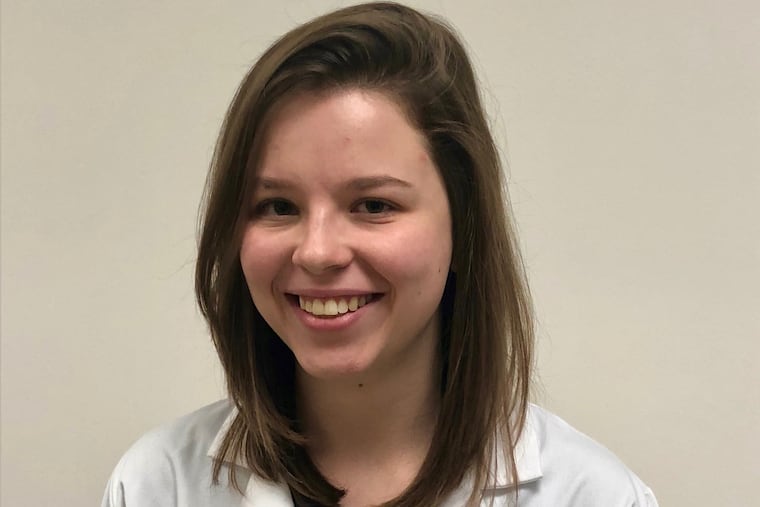At Temple, a med student faces a new reality of guns
Standing against the wall, trying not to be in the way, I glimpsed his face and realized he was little more than a boy. A boy with six gunshot wounds to his chest and abdomen.

On Nov. 6, I left Philadelphia, where I am a medical student, and drove home to vote in the midterm elections. Home is the small town of Hamburg in northern Berks County.
As always, my dad's copy of American Rifleman, a monthly publication of the National Rifle Association, was sitting on the cushion of his favorite chair.
Growing up in rural Pennsylvania, the daughter of a proud Marine Corps veteran and lifetime member of the NRA, I learned from an early age that guns keep people safe. But the reality of guns in my hometown is not the reality of guns in my new home in Philadelphia.
My views on guns and gun violence have changed dramatically since my first time shadowing in the Temple University Hospital Emergency Department's trauma bay.
The trauma bay is something like purgatory, the way it exists between the outside world and the rest of the hospital. Between life and death.
Police burst through the double doors on that Tuesday afternoon, carrying a male who had no pulse.
Standing against the wall, trying not to be in the way, I glimpsed his face and realized he was little more than a boy. A boy with six gunshot wounds to his chest and abdomen.
The choreographed dance began. The emergency room resident placed a tube down his throat. Nurses pierced his veins with needles and cut his clothes from his body. Another nurse rifled through his wallet. She couldn't find his ID. We didn't know his name.
The trauma surgeons performed a thoracotomy, opening his chest to get to his heart. His blood gushed onto their blue trauma gowns and pooled on the floor. A bullet had torn through his left atrium, a literal shot through the heart. There was nothing the surgeons could do. They called his time of death.
The residents asked whether I wanted to suture him closed. I told them I was only a first-year medical student, that I hadn't learned how to suture yet, that I hadn't really learned anything yet. "That's the point," they said, inviting me to take a closer look. "Come. Learn."
Tiptoeing around the pools of blood, I held my too-clean white coat out of the way to lean over his open chest. I was shocked by how young and healthy his body looked compared with that of the cadaver I was studying in my anatomy class.
I thought about how this boy, young and healthy just moments before, ended up in the trauma bay on a typical Tuesday afternoon with a bullet hole in his heart. And I thought about how, by the time I left the hospital that day, the floors would be scrubbed, the supplies restocked, and the trauma bay reset, ready for the next dance.
For my father, gun ownership represents his right to bear arms; a right foundational to his understanding of constitutional freedom, granted by a country for which he would have given his life. In my childhood, I felt safe with guns in my home and community. But for countless Americans today, living in places from Philadelphia to Parkland, this is not their reality.
The American College of Physicians recently published a paper on firearm injuries and deaths. The day after the midterm elections, the NRA responded to that paper, tweeting, "Someone should tell self-important, anti-gun doctors to stay in their lane."
As a future physician, I stand with the ACP in believing that the medical profession has a special responsibility to speak out on the prevention of firearm-related injuries and deaths. Not to threaten anyone's rights, but to afford every American the same opportunity I had as a child to feel safe in their homes, schools, and communities.
Miranda Haslam is a second-year student at the Katz School of Medicine at Temple University.